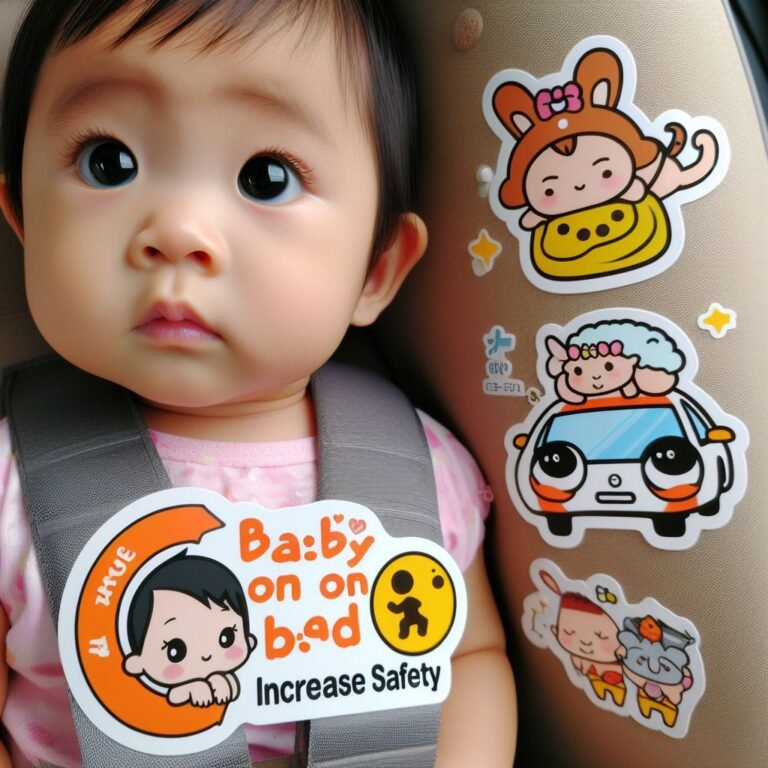Best Baby Gates : Can Babies Climb Over Baby Gate ? 7 Baby Gate Facts You Need to Know
Are you worried that your little one might be able to scale their baby gate like a nimble mountain climber? Fear not, as we delve into the factors that influence a baby’s ability to climb over a baby gate.
In this article, we explore the developmental milestones of climbing in babies, offer tips on choosing the right gate, and provide strategies to deter their escapades.
By ensuring a safe environment beyond the gate, we can serve and protect our precious bundles of joy.
Key Takeaways
- Physical strength and coordination vary among babies, making it easier for some to climb over baby gates.
- Climbing skills in babies typically develop between 9 to 12 months, with attempts to climb stairs and small obstacles occurring.
- Choosing a baby gate with appropriate height, durability, and a secure latch or lock system is important to prevent climbing escapades.
- In addition to using baby gates, ensuring a safe environment for your baby involves securing furniture, keeping choking hazards out of reach, disinfecting toys and surfaces, and installing detectors for smoke and carbon monoxide.
Factors That Influence a Baby’s Ability to Climb Over a Baby Gate
One of the factors influencing a baby’s ability to climb over a baby gate is their physical strength and coordination. Babies develop physically at different rates, and their strength and coordination abilities vary accordingly. Some babies may possess the necessary strength and coordination to climb over a baby gate earlier than others.
Physical strength plays a significant role in a baby’s ability to climb over a baby gate. Babies with stronger muscles will find it easier to pull themselves up and navigate obstacles. Additionally, coordination is crucial for successfully climbing over a baby gate. Babies need to be able to coordinate their movements and balance while climbing, which can be challenging for those who are still developing these skills.
Apart from physical factors, another essential aspect that influences a baby’s ability to climb over a baby gate is their cognitive development. Babies with more advanced cognitive skills, such as problem-solving and spatial awareness, may be more inclined to figure out how to climb over the gate. On the other hand, babies with less developed cognitive abilities may struggle to understand the mechanics of climbing and be less likely to attempt it.
Understanding the factors that influence a baby’s ability to climb over a baby gate can help caregivers take appropriate precautions and ensure the safety of the child. It is essential to consider each baby’s unique physical and cognitive development when determining the appropriate time to introduce a baby gate.
Understanding the Developmental Milestones of Climbing in Babies
Frequently, caregivers should familiarize themselves with the developmental milestones of climbing in babies to ensure their safety and support their physical and cognitive growth. Understanding these milestones can help caregivers create a safe environment and provide appropriate guidance to babies as they explore their surroundings.
Babies typically start developing their climbing skills between the ages of 9 to 12 months. At this stage, they exhibit increased strength and coordination, allowing them to pull themselves up to a standing position and cruise along furniture. As their muscles continue to strengthen, they may begin to attempt climbing stairs or small obstacles.
By around 12 to 18 months, babies may become more adventurous and attempt to climb onto low surfaces such as sofas or chairs. They may also try to climb up and down stairs with assistance. As they approach their second year, their climbing abilities improve further, and they may be able to climb playground equipment, such as small slides or climbing structures, with supervision.
It is important for caregivers to provide a safe and supervised environment for babies to practice their climbing skills. This includes securing furniture to prevent tipping, installing safety gates at the top and bottom of stairs, and ensuring that climbing equipment is age-appropriate and well-maintained.
Choosing the Right Baby Gate to Prevent Climbing Escapades
When selecting a baby gate to prevent climbing escapades, caregivers should consider the height and durability of the gate to ensure it effectively restricts the baby’s access to hazardous areas. The safety and security of the baby is of utmost importance, and choosing the right baby gate is a critical decision. The height of the gate should be tall enough to prevent the baby from climbing over it, while its durability ensures that it withstands the baby’s attempts to scale it.
In addition to height and durability, caregivers should also consider the gate’s design and installation method. The gate should have a sturdy latch or lock system that is difficult for the baby to open, providing an added layer of security. It is also important to choose a gate that can be securely mounted to the walls or door frames to prevent the baby from knocking it down or pushing it aside.
Furthermore, caregivers should assess the gate’s overall stability and strength. It should be able to withstand the baby’s weight and pressure without tipping over or collapsing. It is advisable to choose a gate made from high-quality materials that are built to withstand the demands of an active and determined baby.
Tips and Strategies to Deter Babies From Climbing Over Baby Gates
To effectively deter babies from climbing over baby gates, caregivers can implement various tips and strategies that prioritize their safety and prevent potential accidents.
One of the most important strategies is to choose a baby gate with a height that is appropriate for the child’s age and developmental stage. A gate that is at least three-quarters of the child’s height is recommended to prevent them from easily climbing over. Additionally, caregivers should ensure that the gate is securely installed, with no gaps or loose parts that a baby could use to gain leverage.
Another effective tip is to create a safe and stimulating environment for the baby. Providing plenty of age-appropriate toys and activities can help redirect their attention away from the gate and discourage climbing behavior. It is also important to supervise the child whenever they are near the gate, as constant monitoring can prevent accidents and allow caregivers to intervene if the baby attempts to climb over.
Furthermore, caregivers can use positive reinforcement techniques to discourage climbing. Praising and rewarding the baby when they do not attempt to climb over the gate can reinforce good behavior. Consistency is key, and it is important to remain firm and consistently discourage climbing, even if the baby becomes persistent.
Ensuring a Safe Environment for Your Baby Beyond Baby Gates
A safe environment for your baby beyond baby gates can be achieved by implementing additional safety measures and ensuring that potential hazards are minimized.
While baby gates provide a crucial barrier to keep your little one contained and safe in specific areas of your home, it is important to extend safety precautions throughout the entire living space.
One way to ensure a safe environment is by securing furniture and heavy objects that could potentially topple over and injure your baby. Use wall anchors to secure bookshelves, dressers, and televisions, preventing them from tipping over if your baby tries to climb on them.
Additionally, keep small objects, cords, and choking hazards out of your baby’s reach by using outlet covers, cord shorteners, and by storing small items in locked cabinets or high shelves.
Creating a safe environment also involves maintaining a clean and hygienic living space. Regularly disinfect toys, play areas, and surfaces that your baby comes into contact with. Install smoke and carbon monoxide detectors in every bedroom, hallway, and common area to ensure early detection and prevention of potential hazards.
Lastly, it is important to baby-proof your kitchen and bathroom. Install cabinet locks to prevent access to cleaning supplies, sharp objects, and medications. Keep all electrical outlets covered and secure cords out of reach.
Frequently Asked Questions
How Do I Know if My Baby Is Ready to Start Climbing Over a Baby Gate?
To determine if your baby is ready to start climbing over a baby gate, observe their physical development and motor skills. Look for signs of strength, coordination, and balance, as well as their ability to problem-solve and exhibit curiosity.
Are There Any Specific Types of Baby Gates That Are More Effective in Preventing Climbing?
Certain types of baby gates can be more effective in preventing climbing. These gates are designed with additional height, sturdy materials, and secure locking mechanisms to ensure the safety of babies and prevent them from climbing over.
What Are Some Common Signs That My Baby Is Attempting to Climb Over the Baby Gate?
Common signs that a baby is attempting to climb over a baby gate include pulling themselves up, grabbing onto the gate, kicking their legs, and showing frustration or determination. It is important to ensure the gate is secure and meets safety standards.
Can I Use Other Methods Besides a Baby Gate to Prevent My Baby From Climbing?
Using alternative methods to prevent babies from climbing includes removing furniture near the gate, using playpens or play yards, teaching boundaries through consistent verbal cues and redirecting their attention to safe activities.
What Are Some Potential Dangers or Risks Associated With Babies Climbing Over Baby Gates?
Potential dangers and risks associated with babies climbing over baby gates include falls, injuries, and access to hazardous areas. It is important to ensure the gate is properly installed, secure, and regularly inspected to minimize these risks and ensure the safety of the child.
Conclusion
In conclusion, despite our best efforts to contain them, babies have an uncanny ability to defy the limitations of baby gates. Their determination and resourcefulness often surprise us, reminding us that no barrier can truly confine their explorative spirits.
While baby gates may provide a temporary sense of security, it is crucial to create a safe environment that goes beyond these boundaries. Let us embrace their tenacity and strive to foster an environment that encourages safe exploration and growth.






